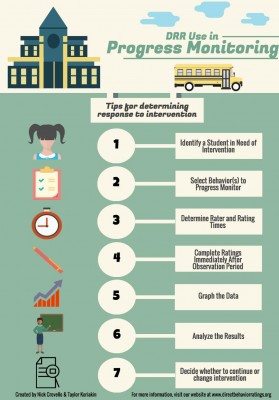DBR use in assessment provides information to evaluate child behavior and guide decisions related to behavior supports. For instance, a DBR may be used to answer the question, “What percentage of time is Sarah disruptive during math class?” or “What percentage of the time is Immanuel compliant with adult instructions?”
How can I use a DBR in assessment?
It’s simple and quick! Print out a DBR Form and:
- Determine the behaviors of interest, either by selecting from among the possible pre-defined target behaviors or identify your own target behavior.
- Decide who, where, and how often to collect behavior ratings with DBR (e.g., daily, weekly). Ratings can be completed in a matter of seconds.
- Collect multiple ratings across different occasions (e.g. periods, days).
- Plot data graphically, and evaluate child behavior.
Who can use a DBR for assessment?
DBR can be used by parents, teachers, students, administrators, and intervention teams to collect information and make decisions regarding a child’s behavior. It’s a great tool for everyone because it is quick, flexible, and evidence-based.
Some content on this page may require the use of a plug-in, such as Adobe Acrobat Viewer.